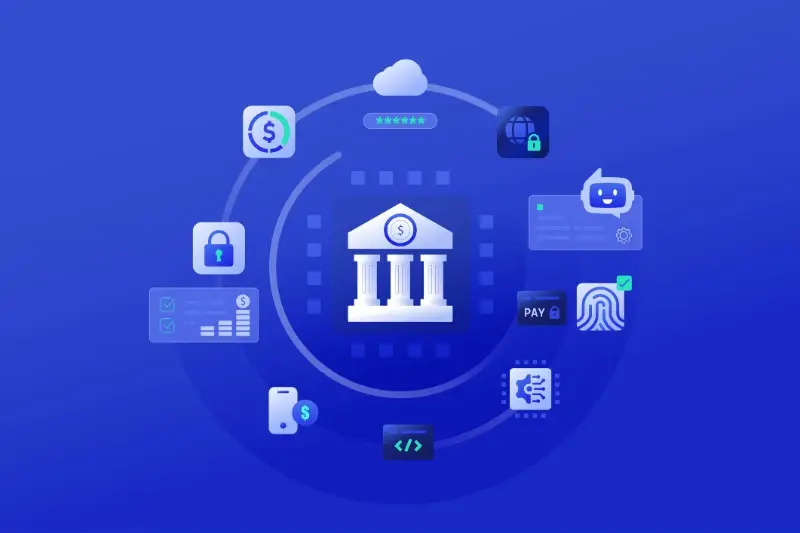Many years ago, the uses of chatbots were limited without a large-scale effort to preprogram decision trees into the application ahead of time. This sort of investment and the mixed results that resulted from it made it difficult to justify implementing chatbots. Nowadays, the rapid development of artificial intelligence and machine learning algorithms has skyrocketed the scope of chatbot applications.
Due to advancements in both processing power and programming methodologies, it has become far easier and vastly more cost-effective to implement a chatbot. Beyond the advantages in terms of ease of use, the software has also become a powerful tool enabling drastic increases in efficiency when utilised properly.
There’s almost no other industry that best exemplifies the impact of chatbots than banking. The uses of chatbots in banking are widespread and are changing how many companies help their clients. Additionally, this technology is opening up opportunities for widespread increases inefficiency.
Understanding what are the potential use cases of chatbots in banking can empower you to make an informed decision on whether or not it is right for your organisation.
What is a chatbot, especially in banking?
Chatbots use a combination of technologies in tandem. First is the natural language processing – or NLP – that functions as the bot’s means of understanding the words fed into it and the intent or context behind them. Next, using NLP in combination with machine learning, the bot can improve its response accuracy with every session as data is being fed into it and rated. Running the bot over large data sets allows it to learn at a rapid pace and achieve degrees of accuracy that often exceed even human counterparts.
What makes it even more exciting in terms of the advantages of chatbots in banking is that a bot can be trained to understand when it should escalate the conversation to a live agent. One of the greatest risks associated with chatbots in banking is that they will perform complex tasks incorrectly. Well, whether it is due to an encounter with unknown inputs or due to the comprehension of the customer’s level of frustration demonstrated in their language patterns, a banking chatbot will know when a task is beyond its capabilities.
What are the potential use cases for chatbots in banking?
Availability
One of the advantages of chatbots in baking is that they allow your customers to have 24/7 access to your organisation. This results in much better customer experience because they can obtain the information they seek as easily as if they were able to talk directly with a live agent at any time. Chatbots are also platform agnostic so they can be used on both iPhone and Android apps.
Efficiency boosts
Another reason why chatbots in banking are so effective is that they can boost efficiency and improve the time management abilities of your staff. By enabling a bot to handle the lower-skill tasks and answer questions that have been answered for many others or are well documented, it frees up your organisation’s employees to focus on high-skill, high-reward problems.
Notifications
The systems used in a chatbot architecture can also be utilised as a means of providing company or personal updates to all customers at once. For example, chatbots in investment banking can give customers updates on their portfolio performance. Then, if any customer has questions about the update, it can handle the responses required.
Product Recommendations
Aside from the ROI of increased efficiency, another use case of chatbots in banking is that they can learn about each customer over time. Then, they can recommend services or products that would enhance their experience with your organisation.
Anyone of the advantages of chatbots in banking listed above is reason enough for a company to integrate this software into their user experience model.
What is the risk of chatbots in banking?
As with all forms of process changes or technology enhancements, there are always risks involved. Some of these risks include the possibility of the bot to misunderstand the customers request and providing them with unrelated information in response. This sort of mishap can result in a frustrating experience for the customer. However, the more a chatbot is utilised in banking and able to process the data on its successes and failures, the less likely this sort of situation will occur.
Other potential risks associated with chatbots in banking come from the preconceived notion that automated systems are unhelpful and impersonal. If the clients do not feel like your organisation is making a personal connection with them, they are less likely to utilise those systems and more likely to feel under-appreciated. These preconceived notions are rapidly decreasing as the general population becomes more familiar with AI assistants such as Siri, Cortana, and Alexa. Beyond the exposure changing our acceptance of the role of chatbots in banking, the technology itself keeps getting better as time goes by. As such, interacting with banking chatbots becomes more comfortable for the end-user.
The future of customer engagement in banking is chatbot AI
As chatbot AI continues to improve, it will generate more accurate, faster, and helpful responses than even their human counterparts. As a result, the potential uses of chatbots in banking and beyond will skyrocket.
The tsunami of data generated by organisations on a daily basis is finally able to be utilised to generate customer insights and improve the overall performance of the business. These new technology trends will continue to revolutionise the way we all interact with customers and organisations worldwide.
If you have an app idea, Talk To Us today!
Share this
Subscribe To Our Blog
You May Also Like
These Related Stories

The Future of UX in Mobile Banking Application Development

Emerging Technologies In Finance Mobile App Development For 2025





